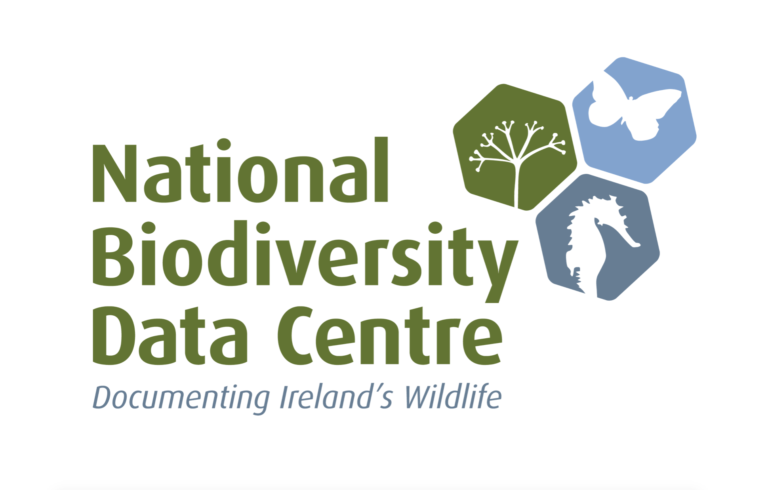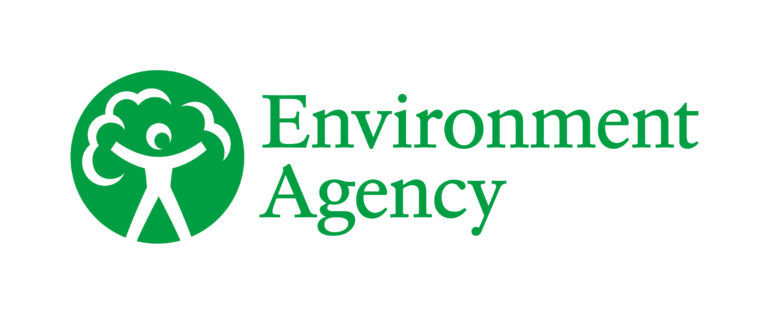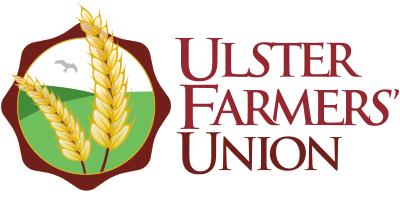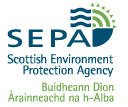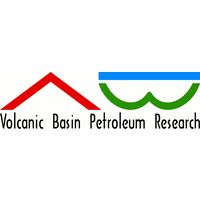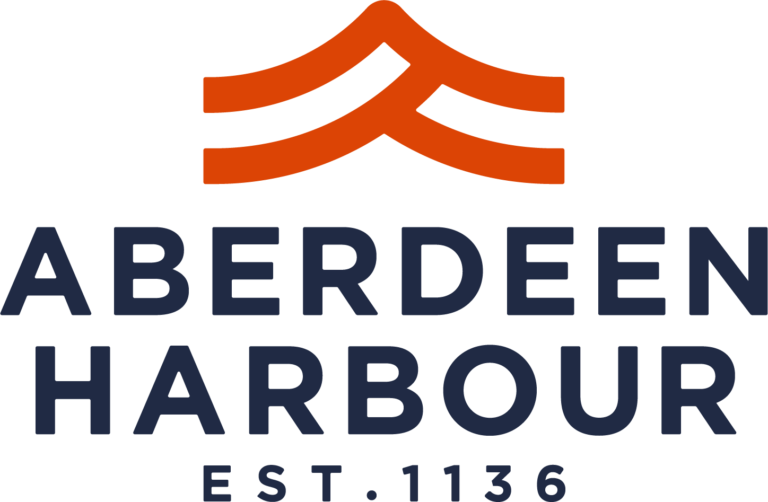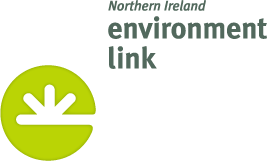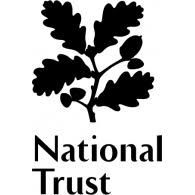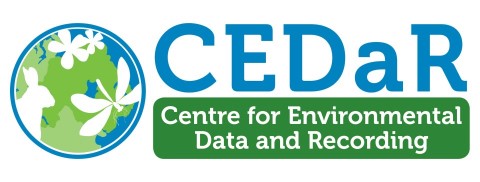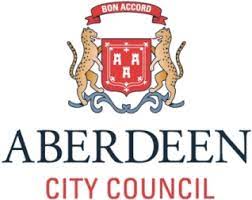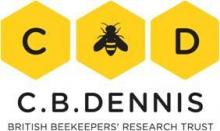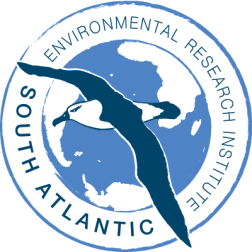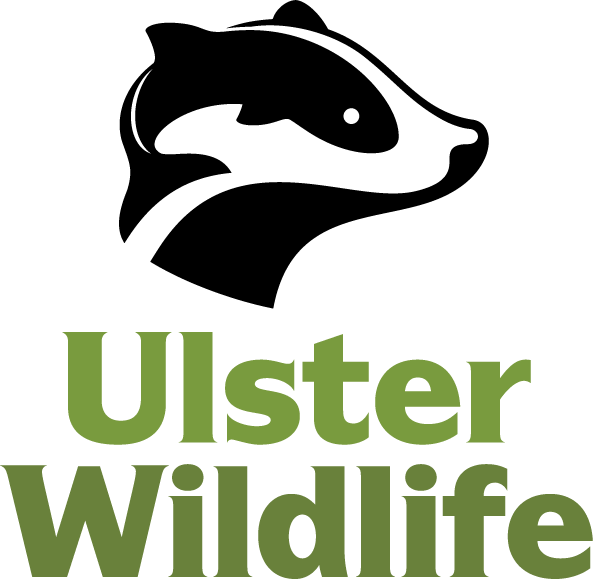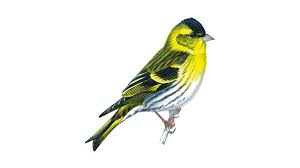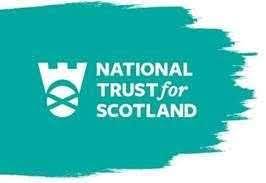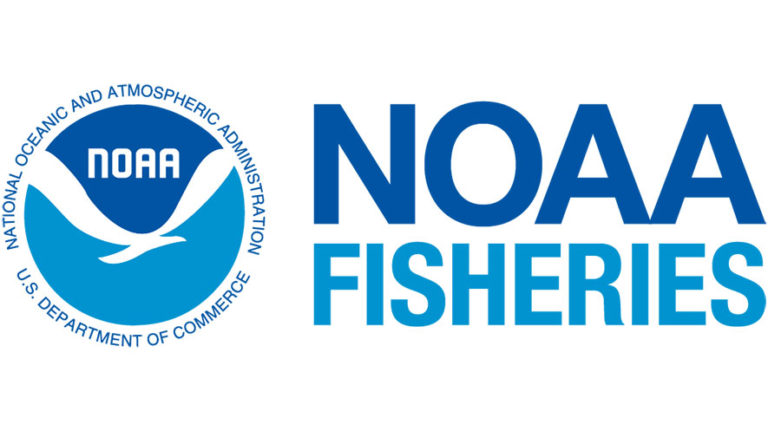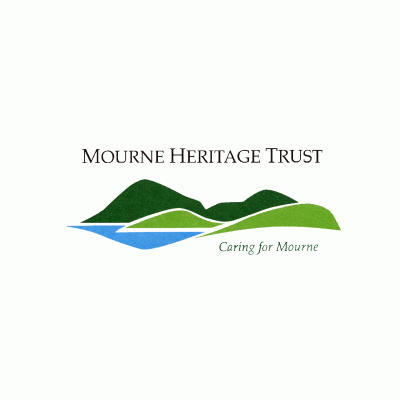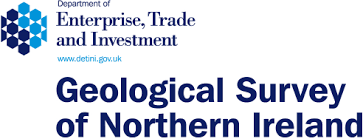Each year the Natural Environment Research Council (NERC) offers level 1, 2 and 3 (and 4 in the case of integrated masters) undergraduate students from any science background, the opportunity to do a paid summer placement working on a research project within the environmental sciences.
Placements are 6-10 weeks long. For a brief introduction to the NERC REPs scheme and QUADRAT DTP please view our panopto presentation.
Please read before applying: FAQ’s for prospective applicants
DEADLINE: Now closed. Please check back in March/April 2025.
The Research Experience Placement (REP) are intended to encourage students to consider postgraduate education or a career in environmental science. During a REP, an undergraduate student joins the hosting organisation for 6-10 weeks to complete a short-term research project within the environmental sciences.
In recent years, NERC have repurposed the Research Experience Placement (REP) scheme, broadening its scope to address both the quantitative skills gap (e.g. mathematics, statistics, computing, engineering) as well as demographic and diversity-related challenges in the environmental sciences. As such, we particularly welcome applications from candidates within these two groups.
All advertised projects are designed to meet the following criteria:
- Have a clearly defined objective;
- Be within the science remit of NERC;
- Be feasible for a student to complete within the timescale of the award (6-10 weeks);
- Include more than a purely computer/modelling component i.e. some element of fieldwork, data collection, activity to give an understanding of the wider context;
- Give scope for thought and initiative on the part of the student and should not use the student as a general assistant;
Students are subject to eligibility criteria to be able to apply.
The REP placement scheme is open to undergraduate students from any science discipline. Applicants must meet all of the following criteria to be eligible for a REP. The students must:
- Be undertaking their first undergraduate degree (or integrated Masters),
- Must be a registered student at either University of Aberdeen of Queen’s University Belfast at the time of application and for the duration of the placement,
- Students in their final year who have graduated and no longer have student status at the time of the placement start are not eligible,
- As part of our commitment to reducing the quantitative skills gap in the environmental sciences, applicants can only apply for a placement in a different department/discipline to their undergraduate degree,
- For example, undergraduate students studying for a degree in any biological sciences discipline, will not be eligible to apply for any REP placement projects hosted within either of our biological sciences schools.
- Must be eligible for subsequent NERC PhD funding (Details of eligibility for PhD studentships can be found here).
IN ADDITION TO THE ABOVE
This year as part of our ongoing commitment to diversity, equity and inclusion; and to address a shortage of quantitative skills in the environmental sciences; applicants who identify with one or more of the following under-represented groups will be prioritised:
- Black UK/Home candidates
- first-generation students
- students from low socio-economic background
- disabled students
- studying a quantitative discipline
Definition of terms
First generation student – this is the first person (or first generation) from a family to go to university i.e. your parent/guardian did not attend university
Socio-economic background – this takes into account your guardians’ educational qualifications, your guardians’ occupations, household income and reliance on government support before you turned 18.
A salary is available at the National Living Wage for each placement. A further £500 will be available for project research and training expenses if required.
Research and training expenses could include, for example, travel costs associated with site visits, critical training, field or lab equipment etc, the costs of which must be itemised and justified in the final report.
Successful candidates will be employed on a temporary contract by the University of Aberdeen at grade 1, spinal point 7, and will be paid an hourly rate of approximately £11.19 (Apr 2024). Holiday pay will also be paid. This salary will be paid monthly up on submission of an accurate timesheet, and work hours must be logged.
Applicants should apply by sending the following documentation to sbstempservices@abdn.ac.uk by the stated deadline:
- This application form;
- A 2-page CV (please include any placements/internships indicating whether these were paid/unpaid);
- Your record card / provisional transcript;
- University of Aberdeen students can request record cards from studentrecords@abdn.ac.uk or you can download this from the student portal
- Queen’s University Belfast students can request provisional transcripts from the school administrator or you can download this from the student portal
You must also complete the EDI form linked in the application form, as part of your application. A unique ID number will be generated upon completion of the EDI form – please include this in your application. Your application will not be considered if you have not completed this form.
Candidates may apply for a maximum of ONE placement project. Multiple applications and/or incomplete applications will not be considered.
Please be advised that you cannot apply for a project within the school or discipline you currently study within e.g. a biological sciences student cannot apply to do a biological sciences REPs placement.
Please download the application form here: REPs Summer Placement Application Form 2024.
Applications will be reviewed by the project supervisory team after the deadline. Supervisors will identify the most suitable candidate. This candidate will be invited to participate in a brief 15-20 minute interview via Microsoft Teams.
Interviews will be held by a panel of QUADRAT academics from across UOA and QUB, plus an Equality & Diversity representative. The project supervisor will not be present for your interview.
You will be assessed on a variety of aspects of your application, not only your academic qualifications. Your potential to successfully deliver the project is critical, however we recognise that everyone’s circumstances are different and opportunities are not always evenly distributed. The application form allows you to identify any circumstances, past or present, that you feel might have influenced the opportunities you had/have to develop skills related to this application. Such circumstances may be directly or indirectly related to education per se. Should you choose to disclose any such information (this is entirely optional), this will allow the panel to assess, from your point of view, your skills relative to opportunities. Information of this type is confidential and will only be read by individuals who are integral to the interview and selection process.
Participation in the REPs scheme comes with a few stipulations, everything you need to know is below:
- The placement must take place for 6-10 weeks;
- Placements should take place between June and September 2023;
- The successful students will be required to complete temporary employment contracts at the University of Aberdeen in order for payment to be processed. These contracts restrict you to 189 hours of paid work – any work over an above this cannot be paid.
- Contracts must be reviewed and approved by HR before any work on the placement begins.
- You must keep a detailed and accurate record of all hours worked. This will have to be signed off by your project supervisor on a monthly basis.
- Your record of hours worked (dates & hours) must be submitted alongside monthly timesheets detailing your weekly hours in order for payment to be processed. These must be signed off by the project supervisor.
- At the end of your placement you will be required to complete an online report for NERC – a link to this will be provided;
- We will also ask you to write a brief testimonial for the website (see others on this page) and a blog post about your experience as part of this placement scheme.
- You will be asked to present some of your findings to our current students up on completion of the project.
You will be allocated a QUADRAT PhD student as a mentor for the duration of your summer placement. This will be a student who works in a similar or related area of research and may even be within the same research group.
In addition to this there will be opportunities to engage with our QUADRAT PhD students if you wish to learn more about their research and what it is like to undertake a PhD at either the University of Aberdeen or Queen’s University Belfast.
Project Catalogue: Summer 2024
Title: Is this boreal life? Reconstructing the intensity of boreal wildfires over centennial and millennial timescales
Lead Supervisor: Dmitri Mauquoy (d.mauquoy@abdn.ac.uk) and Thomas Theurer (thomas.theurer2@abdn.ac.uk), University of Aberdeen, School of Geosciences
Discipline: Geography
Proposed start date: 17/06/2024
Location: All the experimental work associated with this project (laboratory analyses) will take place on campus at the University of Aberdeen. Please consider this when applying since the budget for research costs, including travel and accommodation, is limited.
Lab & Field Work: Laboratory analyses of peat samples. This project does not include fieldwork.
Project description: Wildfires may be one of the most powerful visual examples of a rapidly changing climate. Globally, fires exert a major control on the atmospheric CO2 concentration as they reduce the quantity of carbon stored in vegetation by around 10%. Future climate change is predicted to strongly increase fire occurrence in forest ecosystems, which is alarming as boreal forests contain one-third of the global forest area and one third of terrestrial carbon stocks.
The aim of this project is to explore the ability of Raman spectroscopy to quantitatively reconstruct the fire intensity (the time-averaged energy flux in W m-2) of a wildfire using modern and preserved (sub-fossil) charcoal fragments contained within boreal forest hollow peatlands.
Our research has the potential to answer questions such as:
“How has wildfire burning intensity changed during previous periods of climate change?”
“Severe forest fires have recently been recorded across Canada, USA and Scandinavia. Are these fires anomalous in terms of their intensity, compared to the mid-Holocene thermal optimum ~8000 years ago?”
The objectives of the research experience placement are to:
- Undertake loss-on ignition and macro-charcoal analyses of a forest hollow peat deposit collected from Finland (Figure 1)
- Explore how charcoal accumulation rates have changed through time (14C chronologies are in the process of being developed)
iii. Reconstruct the intensity of burning by measuring the Raman spectra of macro-charcoal fragments through time. This involves analysing the microstructure of charcoal fragments with a laser beam. By measuring the difference between the incident and scattered photon energy (‘Raman Shift’) we can estimate the influence of increasing thermal energy (i.e, wildfire intensity) during charcoal formation.
Training & Development: Training will be given for all experimental techniques used in the lab.
Title: Unveiling CO2 Emissions from Cropland Soils: Exploring Climate Change Impacts
Lead Supervisor: Mohamed Abdalla (mabdalla@abdn.ac.uk), University of Aberdeen, School of Biological Sciences
Discipline: Plant ecology
Proposed start date: 17/06/2024
Location: All the experimental work associated with this project (laboratory analyses) will take place on campus at the University of Aberdeen. Please consider this when applying since the budget for research costs, including travel and accommodation, is limited.
Lab & Field Work: Students will engage in 3-4 field visits (near Edinburgh) where they will conduct hands-on soil measurements, including soil moisture, temperature, and pH at different soil depths.
Project description: Understanding the dynamics of carbon dioxide (CO2) emissions from cropland soils is crucial for predicting and mitigating climate change impacts. The Denitrification-Decomposition (DNDC) model has emerged as a valuable tool for simulating greenhouse gas emissions from agricultural soils. This research experience placement aims to delve into the intricacies of utilizing the DNDC model to simulate CO2 emissions from soils and assess its implications for climate change mitigation strategies.
Objectives:
-
- Analyse the already collected data on CO2 emissions, soil properties, climate data, and land management practices.
- Gain familiarity with the DNDC model and its underlying principles.
- Implement the DNDC model to simulate CO2 emissions from soils under various scenarios.
- Validate the model outputs against the empirical data and refine the simulation parameters accordingly.
- Investigate the factors influencing CO2 emissions from soils, such as soil type, land use, and management practices.
- Assess the effectiveness of different mitigation strategies in reducing CO2 emissions from soils.
- Activities:
- Review relevant literature on soil CO2 emissions, the DNDC model, and mitigation strategies.
- Visit the field and gather some missing soil parameters such as soil moisture, temperature, and soil pH.
- Learn to use the DNDC model and input the collected data to simulate CO2 emissions from soils.
- Compare the simulated CO2 emissions with observed data to validate the model’s performance.
- Conduct sensitivity analyses to identify key parameters influencing CO2 emissions and their uncertainties.
- Explore different scenarios, such as changes in land management practices or climate conditions and assess their impact on CO2 emissions.
- Investigate potential mitigation strategies, such as conservation tillage or cover cropping, and simulate their effects on CO2 emissions.
Outcomes:
- Enhanced understanding of the processes governing CO2 emissions from soils.
- Proficiency in using the DNDC model for simulating greenhouse gas emissions.
- Insight into the potential impacts of different land management practices on soil CO2 emissions.
- Contribution to scientific knowledge on climate change mitigation strategies in agricultural systems.
- Development of research and analytical skills applicable to future studies in environmental science and agronomy.
This research experience placement offers a valuable opportunity to delve into the complexities of simulating CO2 emissions from soils using the DNDC model. By combining theoretical knowledge with practical skills, students will contribute to advancing our understanding of soil carbon dynamics and inform strategies for mitigating climate change in agricultural landscapes.
Training & Development: During their placement, students will have access to enriching opportunities carefully crafted to support their overall development and improve their skills in environmental research. They will conduct hands-on soil measurements, including soil moisture, temperature, and pH at different depths. By actively participating in these activities, students will not only learn essential methods but also enhance their expertise in collecting accurate data. Training will be provided in all techniques.
Title: Monitoring, Mapping and Modelling Coastal Erosion of Golf Courses: Ground Control for Drone Image Acquisition
Lead Supervisor: David Green (d.r.green@abdn.ac.uk), University of Aberdeen, School of Geosciences
Discipline: Geography
Proposed start date: 01/06/2024
Location: All the data analysis will take place on campus at the University of Aberdeen. Please consider this when applying since the budget for research costs, including travel and accommodation, is limited.
Lab & Field Work: Royal Aberdeen Golf Course (RAGC) Bridge of Don. The field site will be visited several times during the summer to collect data and survey the Ground Control Points, approximately once a month, e.g. for one or two days, weather dependent for drone flying. Please consider this when applying.
Project description: All coastlines are subject to dynamic change through wave and wind action, often leading to significant loss of land through erosion. Many areas around the World are increasingly being exposed to such threats resulting in partial or complete loss of valuable economic assets such as golf courses. In the near future, climate change will likely accelerate the rate of coastline change with rising sea levels and more frequent and energetic storms putting more of these economic assets at risk.
Many golf courses in the United Kingdom are located at the coast and in Scotland, many of these courses are now at increasing risk from climate change. To develop effective approaches for these ‘at risk’ assets, and to be able to plan ahead, there is a need to establish the locations most at risk and the rates of change to, for example, develop appropriate and cost-effective coastal management solutions.
The purpose of this project is to further develop and enhance an existing and ongoing coastal monitoring project for a golf course in Aberdeen.
Study Site: The Royal Aberdeen Golf Club (RAGC) Bridge of Don.
Method: This project combines an integrated approach to environmental management, combining theory, practice, and the application of several geospatial technologies to spatial data collection, monitoring, modelling and geo-visualisation.
Recent advances in accurate surveying capability, information extraction, and soft-copy photogrammetry for 3D terrain and object modelling provide a unique and complementary suite of geospatial hardware and software technologies for environmental data collection to address coastal management problems with the aid of low-cost, high-resolution, multi-temporal aerial data collection and monitoring for mapping and 3D-modelling of the coast.
Drone imagery is collected, processed, and mosaiced, and the stereo aerial imagery is used to generate 3D models (DSM/DTM) of the study sites to help understand the spatio-temporal changes of the coastline at the location, and the spatial impact of coastal erosion. Comparisons are made with older photographs (visual reference) as well as the Dynamic Coast project (https://www.dynamiccoast.com/).
This project will: (a) involve the student developing an overview and understanding of coastal erosion, drone data collection, softcopy photogrammetric data processing, and the derivation of spatial information for analysis and input to a Geographic Information System (GIS; (b) the practical use of an RTK GPS system to survey in Ground Control Points (GCPs) at the study site to improve accuracy of measurements; (c) the input of the data into a GIS database for geo-visualisation, spatial analysis, and visual communication including the use of ESRI Storymap and webGIS software and; (d) the design and creation of a scientific poster to aid in raising awareness and education about the impacts of coastal erosion.
The project will help to demonstrate the importance of a geographical understanding and the role of integrated geospatial technologies in understanding the complexity of coastal management problems In a climate change context.
Training & Development: The student will be introduced to: (i) the use of Geographical Information Systems (GIS), webGIS, and remote sensing software; (ii) drone technology and drone data acquisition hardware and softcopy photogrammetry software and; (iii) field data collection with an RTK Global Positioning System (GPS). An introduction to some cutting-edge geospatial software tools, which will include learning some data processing, analysis, and geo-visualisation skills. Training in these techniques will be provided.
Title: Sweet and salty: Bumblebee self-selection for sodium (Na+) and other mineral salts in sugar solution
Lead Supervisor: Fabio Manfredini (fabio.manfredini@abdn.ac.uk), University of Aberdeen, School of Biological Sciences
Discipline: Behavioural biology
Proposed start date: 01/07/2024
Location: The entirety of this project will take place in a designated greenhouse space on the University of Aberdeen campus and will run over 10 weeks. Please consider this when applying since the budget for research costs, including travel and accommodation, is limited.
Lab & Field Work: The entirety of this project will take place in a designated greenhouse space on the University of Aberdeen campus and will run over 10 weeks. Please consider this when applying since the budget for research costs, including travel and accommodation, is limited.
Project description: Mineral micronutrients play an essential role in sustaining the metabolic activity of insects. Sodium (Na+) limitation in herbivore and detritivore insects is well documented and salt-seeking behaviour has been reported for insect pollinators through both field observations and few experimental manipulation studies. However, preference for different concentrations of mineral micronutrients has never been tested systematically in bumblebees, limiting our understanding of the importance of these nutritional components in a key pollinator.
This research project will use a self-selecting approach to test foraging preference of captive buff-tailed bumblebees (Bombus terrestris audax) for sugar solutions containing different concentrations of Na+ and other mineral salts in a controlled laboratory setting.
Through this placement, we propose to provide an undergraduate student at the University of Aberdeen enrolled in a non-biology discipline (e.g., statistics, psychology, computer science, engineering) the opportunity to gain hands-on experience working on a discrete experiment in behavioural biology. Working with their QUADRAT mentor, the student will administer a concentration dependent foraging choice experiment in a controlled laboratory setting. Through this experience, the student will gain basic laboratory skills in behavioural biology, including, but not limited to, handling live animal subjects, preparing test and control solutions, and behavioural recording, both in person and with camera devices, and will be introduced to important scientific concepts such as randomisation, control, standardisation, replication and others. They will also have the opportunity to learn basic statistical approaches to analysing and visualising behavioural data using R, including linear modelling, and to process video recording material with the appropriate software.
Training & Development:
- Basic laboratory skills: Health and safety training will be provided, as well as instruction on general lab conduct and etiquette
- Maintenance of bumblebee colonies and handling of live bees in a safe environment;
- Collection of foraging data both in person and through the analysis of camera footage;
- Data management and analysis: the student will be instructed in proper data organisation and management techniques as well as data interpretation and analysis using the R programming language.
Previous project catalogues
How much carbon? What effect does burning intensity changes have upon peatlands, for example their ability to sequester carbon? supervised by Dmitri Mauquoy, University of Aberdeen, School of Geosciences
Searching for influxes of sediment to an ancient coral reef: Microscopy and geochemistry of the mid-late Devonian rocks of Torbay supervised by Alex Brasier, University of Aberdeen, School of Geosciences
Are there any earthquakes in North East Scotland? supervised by Amy Gilligan, University of Aberdeen, School of Geosciences
Establishing DNA barcode reference libraries for biomonitoring and species discovery on UK seagrass beds supervised by Kara Layton, University of Aberdeen, School of Biological Sciences
Trophic structure and functioning of the macrofauna community in Loch Creran investigated via dual stable-isotope labelling experiments supervised by Ursula Witte, University of Aberdeen, School of Biological Sciences
Microplastic distribution and their controls in the Tay Estuary supervised by Rachel Brackenridge & Adrian Hartley, University of Aberdeen, School of Geosciences
Timing the introduction of fallow deer fawns to the social group: the role of fawn sex, maternal age and experience supervised by Domhnall Jennings & Greta Bocedi, Queen’s University Belfast, School of Biological Sciences
From the dancefloor to dancing bots: understanding spatial organization of honeybee colonies using Kilobots supervised by Fabio Manfredini & Elena Giannaccini, University of Aberdeen, School of Biological Sciences
Climate change impacts on social networks supervised by Vasilis Louca & David Fisher, University of Aberdeen, School of Biological Sciences
Macroalgal detritus and food-web subsidies in a temperate Scottish fjord supervised by Ursula Witte & Anton Kuech, University of Aberdeen, School of Biological Sciences
Using Machine Learning to reduce localisation errors for automated radiotelemetry systems supervised by Justin Travis, University of Aberdeen, School of Biological Sciences
Morphological analysis of volcanic glass as a method of reconstructing eruption processes supervised by Gill Plunkett, Queen’s University Belfast, School of Natural & Built Environment
Which plants were burnt? Exploring the charcoal morphologies of peat forming plants in Finland supervised by Dmitri Mauquoy & David Muirhead, University of Aberdeen, School of Geosciences
Uncovering the seismic signal of the environment in eastern Scotland supervised by Amy Gilligan, University of Aberdeen, School of Geosciences
Microplastic distribution in the Gulf of Cadiz supervised by Rachel Brackenridge, University of Aberdeen, School of Geosciences
Addressing food security through data and innovation: analysing the effectiveness of a novel fruit fly trap for small farmers in a developing country supervised by Juliano Morimoto & David Fisher, School of Biological Sciences, University of Aberdeen
Quantitative methods for authentication of Scottish tea supervised by David Burslem & Tassos Koidis, School of Biological Sciences, University of Aberdeen
Behaviour and growth in fallow deer fawns supervised by Isabella Capellini & Domhnall Jennings, School of Biological Sciences, Queen’s University Belfast
ARCZero: Accelerating the pathway to carbon zero farming by measuring and managing carbon flows at the individual farm level and empowering farmers to make positive change supervised by Paul Williams & Nigel Scollan, School of Biological Sciences, Queen’s University Belfast
Investigation of inter-annual, seasonal and diurnal variability in pollen rain supervised by Gill Plunkett & Lisa Coyle McClung, School of Natural & Built Environment, Queen’s University Belfast
Discovery of interactions between river properties and bridges within built infrastructure supervised by Myra Lydon & Jenny McKinley, School of Natural & Built Environment, Queen’s University Belfast
Investigating the relationship between climatological variables and the timing of lake and river ice phenology supervised by Andrew Newton & Donal Mullan, School of Natural & Built Environment, Queen’s University Belfast
Understanding the distribution of thermokarst lakes across the Himalaya supervised by Anshuman Bhardwaj & Lydia Sam, School of Geosciences, University of Aberdeen
Implementing a Machine Learning Approach for the understanding of social learning in honeybee foragers supervised by Fabio Manfredini and Juliano Morimoto, School of Biological Sciences, University of Aberdeen
Modelling historical ice phenology data and implications for future environmental change supervised by Andrew Newton and Donal Mullan, School of Natural and Built Environment, Queen’s University Belfast
Assessing the long-term impact of climatic variables on coastal changes in Scotland using geospatial tools supervised by Anshuman Bhardwaj and Lydia Sam, School of Geosciences, University of Aberdeen
Climate change and the future viability of Europe’s longest Ice Road supervised by Donal Mullan and Andrew Newton, School of Natural and Built Environment, Queen’s University Belfast
Geostatistical analysis of spatiotemporal trends of COVID-19 spread in UK supervised by Lydia Sam and Anshuman Bhardwaj, School of Geosciences, University of Aberdeen
Testimonials
Hi, I am Fabiana and I’ve just started my fifth year of my MSci in Biological Sciences at the University of Aberdeen! This summer, I had the opportunity to work on the QUADRAT REP project titled: “Microplastic distribution and their controls in the Tay Estuary”, supervised by Rachel Brackenridge & Adrian Hartley. I was excited to have been selected for this project as I am passionate about studying the effects of anthropogenic stressors, and microplastic in particular, on biological systems. Thanks to this opportunity, I had the chance to familiarise myself on microplastic pollution by getting real life experience and I also got the chance to study this issue under a different (more geological instead of biological related) perspective! In the 10 weeks I worked on the project, I gained invaluable fieldwork and laboratory experience, and I learned new techniques like laser spectrometry. I was also very lucky to have an amazing supervisor that made some long hours in the lab and field pass by very quickly and was very supportive and helped me improve my statistical skills. Overall, this has been an amazing opportunity not only for gaining more researching skills, but also to familiarise myself in a different field and meeting amazing people with whom I hope I will be able to collaborate in the future. I highly recommend this Research Experience Placement!
Szymon Szymanski, MSci Biological Sciences, University of Aberdeen
Project: Are there any earthquakes in Eastern Scotland?
Supervisor: Amy Gilligan, School of Geosciences, University of Aberdeen
I’m currently in my 5th year studying for an MSci in Biological Sciences. In the summer just after my 4th year, I was looking for a placement to gain more experience and enhance my CV. I came across the QUADRAT REP programme, where I undertook a project titled ‘Are there any earthquakes in Eastern Scotland?’ supervised by Amy Gilligan.
Throughout the project, I worked with Amy and another QUADRAT REP student on the same project, Dave. I spent most of my time testing and trouble-shooting various machine learning approaches to identifying possible earthquakes. However, I also had the opportunity to travel around various sites around Scotland for a few days to help uninstall field seismometers. Going into the project, my experience with fieldwork, machine learning and the target language, Python, was quite limited, but I learned a lot, I greatly enjoyed the experience and I managed to produce interesting results.
I gained many transferrable skills, especially in programming and data analysis. I got to experience work in a research environment with many great people, and at the end of the project I prepared a poster which was exhibited at the BGA PGRiP conference in Edinburgh.
A few weeks before the end of my first academic year as an undergraduate mechanical engineering student, I got to know about the opportunity for a summer internship with Quadrat, and upon researching the details of this placement, I was very excited to apply. The topic that instantly stood out to me was “Trophic structure and functioning of the macrofauna community in Loch Creran investigation via dual stable isotope labelling experiments“ as it combined both: a chance for me to explore marine biology – an area of science that I have been interested in for a long time, and the experiment, in which I believed I could contribute with the skills I gained from the chemistry courses I took the same year.
During the 10 weeks of my placement, I closely worked in the lab with a supervisor Anton Kuech and another REP student, Emily Kovnatore, both of whom were very professional and supportive, which made the working hours more enjoyable.
I am very thankful for the theoretical and practical knowledge I gained throughout this internship and the significant personal growth of my teamwork and disciplinary skills that resulted from continuous cooperation with the people involved in the project.
Hello! My name is Emily Kovnatore, and I’m a fourth-year BSc Chemistry student at the University of Aberdeen. This summer, I worked on a project titled “Trophic structure and functioning of the macrofauna community in Loch Creran investigated via dual dual stable-isotope labelling experiments.”
I looked into getting an internship during the summer and additionally joined the Saltire Scholar Internship Programme 2023, but nothing caught my interest. I then received an email with a few quadrat internship opportunities that attracted my curiosity.
Studying environmental chemistry in my third year drew me even more to this research, and I now have a whole new expertise in a little aspect of Marine Biology that I absolutely want to build on in the future.
Throughout the project, I largely collaborated with a Ph.D. student named Anton Kuech, and another REP student. Anton was always happy to answer questions and demonstrate how to do things around the lab. With a chemistry background, I was able to quickly adjust to the lab and begin working on the duties.
Throughout the project, I had the opportunity to participate in fieldwork to collect macrofauna samples from the Ythan Estuary, which I would then process with Anton and a REP student: taking photos, identifying species, and preparing for Stable Isotope Analysis (SIA). Every Thursday morning, I would attend meetings with other researchers, master’s students, Ph.D. students, and lab a technician. After completing the Ythan Estuary samples, we began processing the Lock Creran samples using the same approach as the Ythan Estuary samples.
Throughout the 10-week project, I learned a range of skills, gained real-world experience, and met amazing individuals. It was a fantastic opportunity that truly opened my eyes to future career opportunities in the marine science industry.
I remember joining this placement during my first-year summer break with a mix of excitement and uncertainty. I didn’t set my expectations too high, but I was genuinely thrilled to be a part of a biology-related project. Biology had been a passion of mine since childhood, even though I eventually pursued a career in computer science. I always wondered what life would have been like if I had chosen biology instead. This placement for the project “Establishing DNA barcode reference libraries for biomonitoring and species discovery on UK seagrass beds” turned out to be an eye-opening experience that gave me a taste of the world of research.
Working alongside Ethan, I picked up some invaluable lessons. One of the most important takeaways was the necessity of thorough preparation when leading a research project. You need to have all the materials and knowledge in place and be ready to tackle any unexpected challenges with well-thought-out solutions.
Beyond the research insights, this experience also pushed me far out of my comfort zone. It introduced me to new activities and broadened my horizons in ways I hadn’t anticipated which I am thankful for.
As a 4th year chemistry student, I wanted to gain some experience in a science setting outside of my degree. I came across the project “Searching for influxes of sediment to an ancient coral reef: Microscopy and geochemistry of the mid-late Devonian rocks of Torbay” and thought it would be a great option for me. I knew nothing about the area of research prior but the project had strong links to my chemistry degree so I thought it would be a great chance to see how I could use what I already knew.
Throughout the 7 weeks of my placement, I got to use various techniques that I have never used before such as optical microscopy, X-ray fluorescence (XRF), carbon and sulphur combustion analysis and scanning electron microscopy (SEM). I spent a good amount of time in the lab and analysed lots of data! I very much enjoyed the experience with all these new techniques as I have broadened my analytical knowledge and gained new data analysis skills. This will be very valuable when I do a placement abroad this coming academic year.
I am very grateful to have been given this opportunity as I felt that I used my summer in a beneficial way to aid my future studies and career. I am also very appreciative of having excellent supervisors who answered any questions I had and were very supportive throughout. This placement has helped me realise how greatly I am able to implement what I have learned in my degree to other disciplines and that I am not limited to only chemistry-based careers.
I’m a first-year mechanical and electrical engineering student with a broad interest in science. I wanted to spend this summer developing myself professionally and improving my understanding of machine learning, and so was intrigued when I saw a REP placement advertising the project “Are there any earthquakes in North East Scotland?”. This project included fieldwork decommissioning seismometer stations as well as data analysis (in Python) using various techniques including machine learning models. I immediately applied, and feel very lucky to have had this opportunity!
The placement was part of a larger project called PICTS (Probing Into the Crust Through Eastern Scotland), and it has given me a fascinating glimpse into the world of geophysics. I worked alongside another REP student, with Dr Amy Gilligan as our supervisor. At the end of the placement we produced a poster to communicate the interim findings of our research, which I presented at the British Geophysical Association’s Post Graduate Research in Progress conference.
The whole REP experience has been extremely rewarding. There was relative freedom in deciding how to approach tasks combined with just the right amount of guidance and support, creating an environment conducive to both learning and progressing the research. Particular highlights for me included being able to spend significant time experimenting with different techniques for training machine learning models on the PICTS data and attending the hugely interesting BGA PGRiP conference.
I would highly recommend undertaking a REP to anyone in a similar situation to me. It has helped me to develop in many ways that are important to both my current engineering studies and future career paths, and it was a fun and rewarding experience at the same time.
As a first-year environmental chemistry student, I have a strong interest in studying the science behind how the natural world functions, as well as what it can reveal about the past. Despite this, I have not yet decided which specific career I would like to pursue. The research experience placement titled “What effect does burning intensity changes have upon peatlands, for example their ability to sequester carbon?” was an amazing introduction into the world of research and has made me deeply consider this as an option for my future. Not only did this project encompass my personal interests in environmental analysis, but it also gave me a glimpse of what a career in research means and enabled me to develop the necessary skills.
Alongside the project, my supervisor (Dr Dmitri Mauquoy) provided me with intriguing background information, putting the practical lab work into context. Throughout the research, I was able to refine my analytical skills, which I will be able to apply to my current studies and subsequent professional life.
I am very grateful for this opportunity as it has made me more confident as a student and I would encourage anyone considering a career in research to apply.
As an Electrical and Electronics Engineering student entering my final year of my Meng of EEE with Robotics, I love problem solving. And when I saw the advertisement for the project “From the dancefloor to dancing bots: understanding spatial organization of honeybee colonies using Kilobots” I knew it was the perfect summer project for me, solving a real-world problem with robotics.
From day one this project was amazing; I got the opportunity to be part of Robotics tours at the University of Aberdeen before I started which gave me the chance to learn about the Kilobots and other robots at the University. I also got the opportunity to join lab meetings with my Supervisor’s lab group, meeting students undertaking various research projects into insects. This increased exposure to the biological side of the issue increasing my understanding of the work I was undertaking.
This project also allowed me to be a part of the discussion to set direction of the project which moved from bees to ants as they were more easily modelled using the Kilobots.
I was able to get practical experience, both working with the CoppeliaSim Simulator and the real Kilobots in the lab. This has set me up well for my final year of study where I will get more experience with Robotics systems. Both in the simulator and with the real Kilobots. I wrote code to simulate the tandem running and random searching behaviour in ants and compared the two in varied areas.
Overall, I really enjoyed my project and felt incredibly supported by my supervisors and others as I worked on my project. I would highly recommend a NERC undergraduate Research Experience Placement to anyone looking for an enjoyable way to gain experience over the summer.
I was involved in the Internship “Uncovering the seismic signal of the environment in Eastern Scotland” which was supervised by Amy Gilligan, School of Geosciences, University of Aberdeen.
I am hugely grateful for the summer internship with such giving me an insight into working in an industry of great interest to me. I was able to visit seismometers of different types across Scotland, being able learn first-hand how they work. The data gathered at each site I was then able to process and investigate using coding softwares. It was ideal to have visited the sites as this meant I knew the environment the data was collected from, making analysis much more manageable. The opportunity to be part of so many stages of the process has given me a unique insight which I am very greatly for. Additionally, being able to aid in servicing the seismometers which are used by many was a rewarding experience. I really enjoyed the challenge this opportunity presented and strongly recommend pursuing a QUADRAT internship.
Interdisciplinary approaches and methods are essential keys for scientific research and investigations. So as a Marine Biology student at the University of Aberdeen entering my third year of University, I was very lucky to be able to participate in the NERC Research Placements and get an insight into Oceanography and Sedimentation processes through working on a project in the School of Geosciences, called “Microplastic distribution in the Gulf of Cadiz”.
During the eight weeks of placement, Rachel (my supervisor) and I worked on how different sedimentary processes and ocean currents and their velocity, influence the deposition of microplastics in the Gulf of Cadiz. We extracted the microplastic from sediment samples from different locations in the Gulf and counted up the particles in each sample. Then we mapped the quantities with ArcGIS to see where hotspots of microplastic deposition could be and how different oceanographic processes influence them.
Working on this project was a great way for me to get insight into a different area of research that could be relevant to my future career, while assisting with investigations that could contribute to the conservation of our oceans. It also helped me to develop new, and deepen my existing lab skills, as well as working with ArcGIS.
All in all, the placement was an insightful and inspiring experience and has strongly reinforced my wish to pursue a career in research.
Hi! I’m a psychology student studying at Queen’s University Belfast. The title of the project was: Timing the introduction of fallow deer fawns to the social group: the role of fawn sex, maternal age and experience.
My main role was to aid a PhD student with their data collection and we worked closely together during my time on the project. My day-to-day experience varied during my time with the project. At the beginning I was trained to use a spotting scope and shown how to vary the zoom and focus according to my needs. My initial task was to observe interactions of mothers and their fawns. I would then record the tags of the deer in question and record the behaviour they were exhibiting. My role then expanded into noting observations associated with mothers who had given birth, returning to group alone, calling, swollen udders etc. Then I was shown how to use a dictaphone to record 20 min observations of a mother-fawn pair.
I would travel to the park early in the morning, get my kit sorted and head out into the park. Often I was working in the park alongside the PhD students but other times I worked independently. Working with a PhD student was great fun and very interesting. It was able ask all the questions I wanted, and they were always met with informed answers. As I had only finished Level 1 Psychology, it was very cool to collect data that would go on to be used for real research. I really enjoyed my experience in Phoenix Park and I hope for more opportunities like this.
Hi! I’m a BSc Chemistry student at the University of Aberdeen now entering my fourth (and final!) year. I spent the summer working on a project called, “Macroalgal detritus and food-web subsidies in a temperature Scottish fjord”. When I saw the placement advertised I was drawn to it because, as a Chemistry student, I had absolutely no prior knowledge about marine biology. It was fun to have my eyes opened to a whole new branch of science! This was enhanced by working with a Ph.D. student who was both enthusiastic about marine biology and also committed to teaching me all sorts of interesting things. I had completed a course in my third year on Environmental Chemistry (comprised of water, soil, and atmospheric chemistry) so it was interesting to compare the similarities and differences of the approaches to environmental challenges from the respective disciplines. During my placement, I worked with samples from Loch Creran: sorting through them and picking out marine macrofauna, such as polychaetes, crustaceans, bivalves, gastropods, and echinoderms. These were then photographed, identified, and stored. The latter half of my placement was spent prepping the macrofauna for stable isotope analysis. The placement helped me to appreciate how a research team functions and gave me valuable insight into options for further study or future careers. It also boosted my confidence in the lab, which I was extremely grateful for when I began my fourth-year Chemistry project.
I’m a BSc Physics student at the University of Aberdeen, entering third year this term. I had the opportunity over the Summer 2022 to participate in a research project “Using machine learning to reduce localization error in auto-telemetry systems” as an intern.
I have a huge interest in machine learning and even though I am a Physics undergraduate I always had a fascination towards Biology. Hence, this project was close to my heart, since I was able to utilize my machine learning skills and learn new things about an area that I am not that familiar with.
During the project I worked with another student at the University of Aberdeen on possible ways of reducing the localization error in auto-telemetry systems. We explored more than 5 machine learning approaches and we achieved significant results that may be relevant enough to be turned into a research paper. We used Python programming language along with many python frameworks to tackle the task of reducing the localization errors that these systems produce.
I have found this opportunity to be extremely rewarding. I was able to delve deeper into machine learning and learnt new things about how this problem could be solved. Furthermore, the experience of being in a research group was an even more valuable experience. The research group supervisors were really helpful, and they really made this placement as good as it could be. They also opened my eyes up to how a papers are established and how they are published, which are going to be cherished skills that I will surely be using in the future.
Hi! I am currently a student on the MSci Microbiology with Professional Studies degree pathway at Queen’s University Belfast (QUB). The summer following the second year of my degree, I was extremely fortunate to land a summer research experience placement with QUADRAT, the title of which was: “Morphological analysis of volcanic glass as a method of reconstructing eruption processes”. This was facilitated by the School of Geography, Archaeology and Palaeoecology at QUB, where my project supervisor was Dr. Gill Plunkett.
This project centred around examining slides from the QUB tephra collection to record the morphology (colour, shape, vesicular qualities, size) of the volcanic glass to try to establish a potential correlation between the morphology of tephra shards and the processes of the eruptions from which they originated. The eruptions that I was focusing on were mainly Icelandic and Alaskan. I used the light microscope to examine each slide and, through imaging software which allowed shard sizes to be recorded, built up a library of tephra micrographs.
My placement was such an amazing experience from start to finish, comprising both lots of microscopy work, as well as research and reading literature on past volcanic eruptions and their dynamics. In building up a portfolio of tephra images, the hopes of this project were to construct a sort of ‘image bank’ for which future students, academics, and other curious individuals can benefit from by allowing others to better learn how to identify tephra under the microscope. Hopefully, the results of this project may also demonstrate potential to infer eruption processes through examining the morphology of tephra shards.
Project: “Which plants were burnt? Exploring the charcoal morphologies of peat forming plants in Finland,” supervised by Dr Dmitri Mauquoy in the School of Geosciences, University of Aberdeen.
This NERC internship was a great opportunity to launch a career in research. Nothing else can really compare with the true experience of being out in the field collecting real data, later to be manipulated and applied to hypotheses. Having experienced this, I would recommend it to anyone wavering to apply for research opportunities.
“Hi! I’m a Psychology student going into my final year at Queens University Belfast. Seeing this placement advertised on the Queens University career’s website immediately sparked my interest. The title of the summer project I worked on was ‘To examine growth rates in fallow fawns’.
During the ten-week project I learned a variety of skills that will be of huge benefit to me for the rest of my career. I learned how to use expensive camera equipment in order to take the correct shots of the ever-fleeting fawns! I recorded the distance of the fawns using a range finder, the tags of the fawn I photographed and the part of the fawn I captured (the rump or the flank), each time I took a photograph. Working in Phoenix park over the summer months learning about the fawns behaviour patterns, the mother-fawn relationships and human-deer relationship was something that was truly fascinating in an amazing learning environment.
Getting to work alongside two highly experienced PhD students really enhanced my knowledge. They knew so much about the deer as they had studied them throughout the past year, along with having an extensive knowledge about zoology and biology with both sharing their incredible experiences working with animals in South Africa and Australia among others! Along with sharing their experiences they really helped me get settled into the project and were there each week to assist me with anything I needed. I really enjoyed working with these students and they have really inspired me with their dedication and real passion for their projects.
This placement has really inspired me to pursue work in environmental and behavioural research after I complete my degree. It was a really amazing summer placement and I enjoyed every minute of it!”
“I’m a BSc Conservation Biology student at the University of Aberdeen, entering into my second year of study. I had the opportunity over the summer of 2021 to participate in the project “Investigating the relationship between climatological variables and the timing of lake and river ice phenology”.
I have a big interest in the environment and the challenges it faces whilst also having some previous experience in geography. I was therefore intrigued by the project and how it seemed to give me an opportunity to combine my interest in the environment whilst further exploring geography and ice phenology.
During the project I got to compose data of freeze-up and breakup dates of ice on lakes and rivers in the northern hemisphere. I then calculated the correlations between that data and temperature data from the surrounding locations. These correlations will be used to see how different climatic variables affect lake and river ice across the northern hemisphere.
I have found this opportunity to be a fun challenge and a valuable experience for my continued studies. By learning more about what conducting a research project entails and by giving me a broader understanding of the environmental challenges we face, it has encouraged me to follow down the research path.”
“Hi! As a Geography and International Relations student at the University of Aberdeen, I am interested in the relationships between people and the environment. Interdisciplinary approaches are key when addressing these relationships. Because of this, I was very excited about the opportunity to work with researchers from the School of Biological Sciences on the project called: “Addressing food security through data and innovation: analysing the effectiveness of a novel fruit fly trap for small farmers in a developing country”.
During this placement, I analysed the field trial dataset provided by the industry partner to assess the performance of the new trap (that captures both male and female fruit flies) compared to the standard traps (that attract only male flies). To do this, we conducted statistical tests – such as mixed effects modelling – using the programming language R. We also developed predictive models to understand the influence of the fruit fly trap on future fly populations. We have been working on presenting these findings in a peer-review publication that will be submitted later in this year.
The project gave me the chance to strengthen my quantitative skills while contributing to research that would help small-scale farmers understand the potential economic benefits of this new trap. I can confidently say that this experience has been immensely invaluable and has encouraged me to explore a career in research.”
“As I am going into my second year of my BSc Architecture degree at the Queen’s University Belfast, I wanted to further explore the environmental side within the built environment. By getting actively involved in the project called “ARCZero – Accelerating Ruminant Carbon towards Net Zero Carbon Farming” – I was able to do so.
Throughout the course of the project, I had the opportunity to experience fieldwork to take soil samples which I would then process in the laboratories. With that being done, I was closely working together with other researchers, industrial partners, and project leaders, with whom I attended various meetings. After a few weeks, the first results from the carbon analysis from a laboratory in England came in and I was able to build up a master spreadsheet featuring the variety of soil properties between the different samples.
Besides, there has been a strong interdisciplinary aspect in terms of initiating a conversation between the two departments of Architecture and Biological Sciences. It was my pleasure to set up meetings with Architecture staff at Queen’s to discuss potentials of linking the project with the built environment to properly inform design solutions. Ultimately, this has certainly been one of the most enriching experiences I have had so far, and I am especially looking forward to how this project will be progressing and when it will be presented at the COP26 in Glasgow!”
Read more about Charlotte’s project on the QUADRAT blog.
“I’m an MSci Mathematics student at Queen’s University, Belfast, entering into my third year of study. This placement was an invaluable opportunity for me to gain experience in research by working alongside an expert in the field in my project titled “Climate change and the future viability of Europe’s longest Ice Road”.
During this project, I was able to work with large sets of data and perform various forms of regression analysis to model how the thickness of the ice roads in seven different locations vary with the temperature. I then compared a number of different models which predicted how the temperature patterns will change over the next 100 years and corrected them for bias. With the models and the future temperature data, I was able to produce predicted values for the thickness of the ice roads in the future for three different climate change scenarios – a temperature increase of 1.5°C, 2°C and 4°C globally.
I was finding it difficult to decide which area of maths I wanted to specialise in, but my work in this project opened my eyes to how much I enjoyed performing statistical analysis, and how rewarding it feels to come to the end of a research project and see what your work has achieved. I have been inspired to change my degree pathway to Mathematics with Statistics and Operational Research, and once I have finished my masters, I now hope to go on to complete a PhD in statistics and enter into the world of academia and research.”
Read more about Emily’s project on the QUADRAT blog.
“Hi! I am a Mathematics & Computing Science student at the University of Aberdeen. I am finishing my BSc this academic year, and my plan is to jump straight into a masters’ degree in Artificial Intelligence after that. I am already between two departments with this degree, but I was super excited to collaborate with researchers from School of Biological Sciences, further strengthening the bond between departments. My project in the NERC-QUADRAT scheme was called: “Implementing a Machine Learning Approach for the understanding of social learning in honeybee foragers”, which is quite a mouthful.
During the 10 weeks of this project, I worked closely with the researchers to identify the genes that play a key role in the waggle dance. We have used several machine learning algorithms, such as Support Vector Machines, in the programming language R. The pragmatic mindset of a programmer was a major benefit here as it allowed me to see the dataset unbiased. At the end of the project we have successfully compiled a list of possible genes that play a great role during the waggle dance of honeybee foragers. To summarise, this has easily been the most interesting project I have contributed to in my career so far.”
Read more about Marcell’s project on the QUADRAT blog.
“I am an Electrical and Electronics Engineering Student at the University of Aberdeen. A big reason why I decided to study engineering was the wide range of applications, so I was excited when I heard about the opportunity to put my skills to practice in the field of climate change research. I worked on a project called: “Modelling historical ice phenology data and implications for future environmental change”.
During my 10-week placement I processed numerous raw datasets from over 1500 sites capturing environmental data over ~500 years using Python. My background in programming allowed me to use algorithms to automate the statistical analysis, observing key trends in the data to gain a better insight into the changes in ice seasons of lakes and rivers in the Northern Hemisphere. I found it highly motivating, knowing that my work was going to contribute to future research. The placement not only strengthened my confidence in my own capabilities but also encouraged me in my decision to pursue a Data Science masters.”
“Hi, my name is Scott Angus and I am a Physics student at the University of Aberdeen and have just started my third year of studying. My summer research project was titled “Geostatistical analysis of spatiotemporal trends of COVID-19 spread in UK”. I saw this placement advertised in an email from the NCS School office and it looked like something that would really interest me as it involved a very current and world-changing topic as well providing an opportunity to work with a new approach to statistical analysis using Geospatial data.
During this project I worked with my two supervisors to gather the daily data regarding the COVID-19 pandemic and compile this into various datasets before working with this in both ArcGIS and R Studio. We analysed the spatiotemporal trends in the spread of the disease and created statistical models to evaluate the effectiveness of various non-pharmaceutical interventions put in place by the Government.
I found it really exciting and rewarding to work on such a topical and rapidly developing area of research, the results of which could help combat future pandemics more effectively and save lives. It also inspired me to do further research in this area for my final year project and beyond.”
Read more about Scott’s project on the QUADRAT blog.
“My name is Milena Zagulak and I’m a 4th-year Mechanical Engineering student at the University of Aberdeen and I was fortunate enough to work on a very exciting project this summer called “Assessing the long-term impact of climatic variables on coastal changes in Scotland using geospatial tools”. Before starting the project I already had some background in working within the coastal science environment, however, I wanted to experience the real, cutting-edge research.
During my placement, I composed a library of Landsat images of Scotland between 1970s-2010s, which were used to map out the changes in the Scottish coast in that period and quantify them using ArcGIS Software. Later on, I performed statistical analysis of the meteorological data from various stations around Scotland and how climatic variables such as precipitation and temperature might be linked to the changes within the coast.
I found it very exciting to contribute to such an important project as such a detailed assessment of the whole Scottish Coast has not been done before. The placement helped me to understand what real research entails and encouraged me to further pursue environmental science, hopefully in a form of a PhD or research work.”





